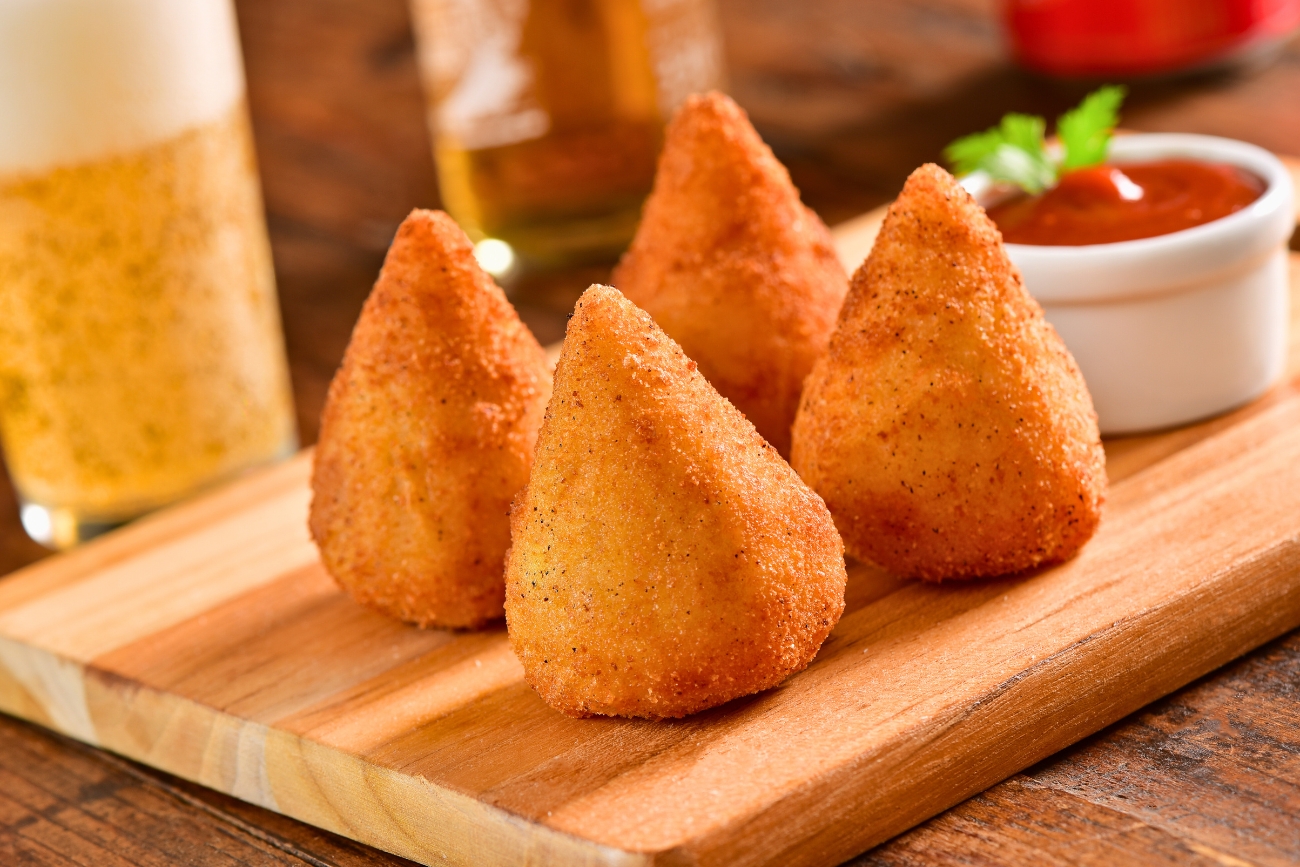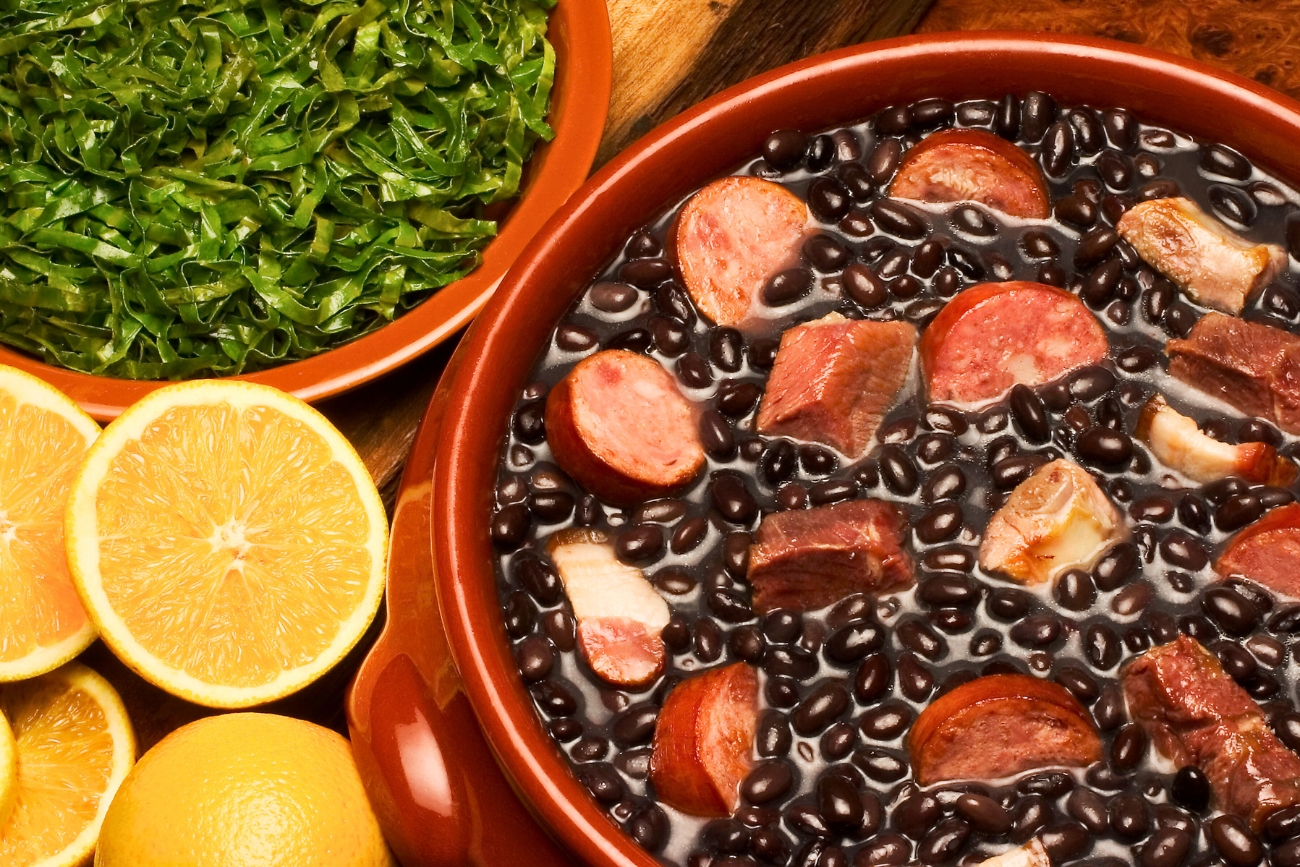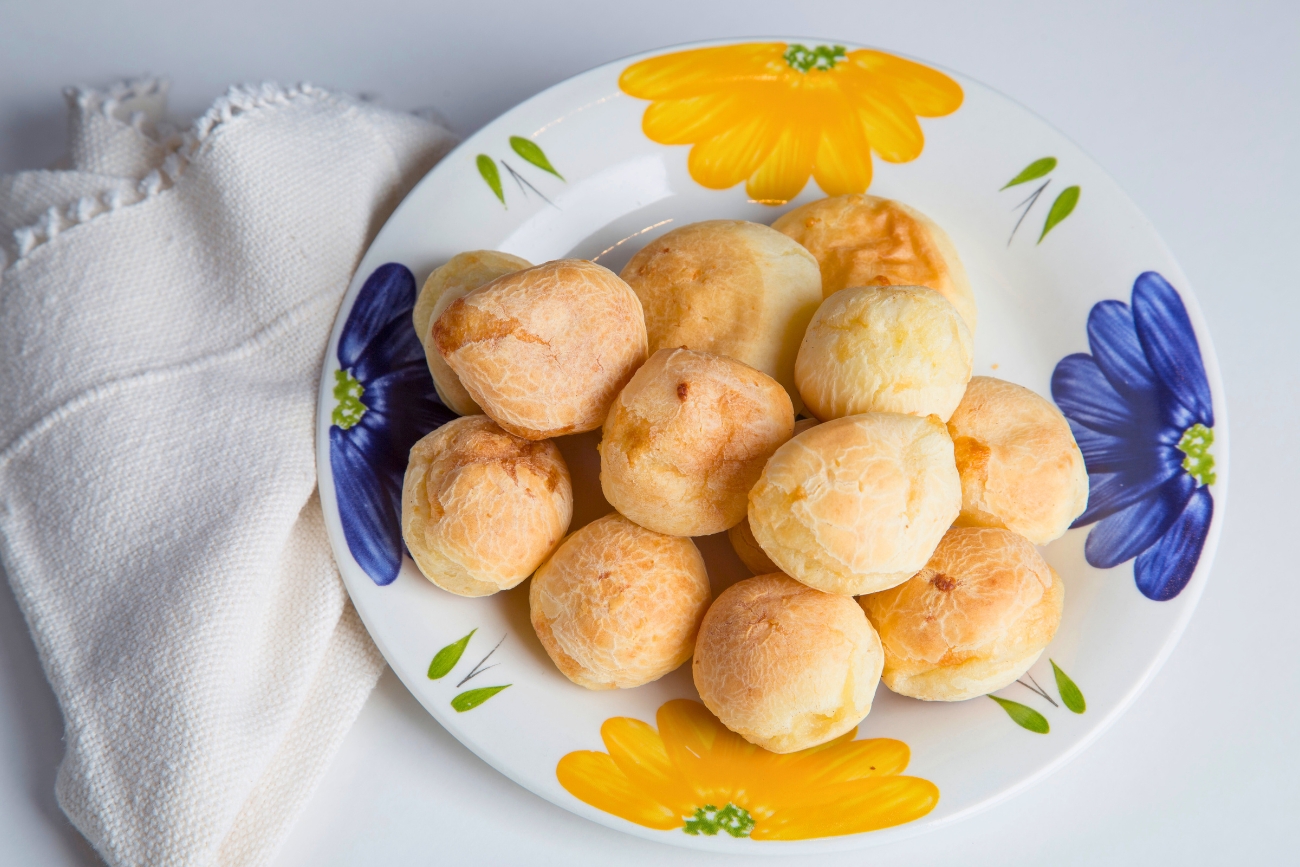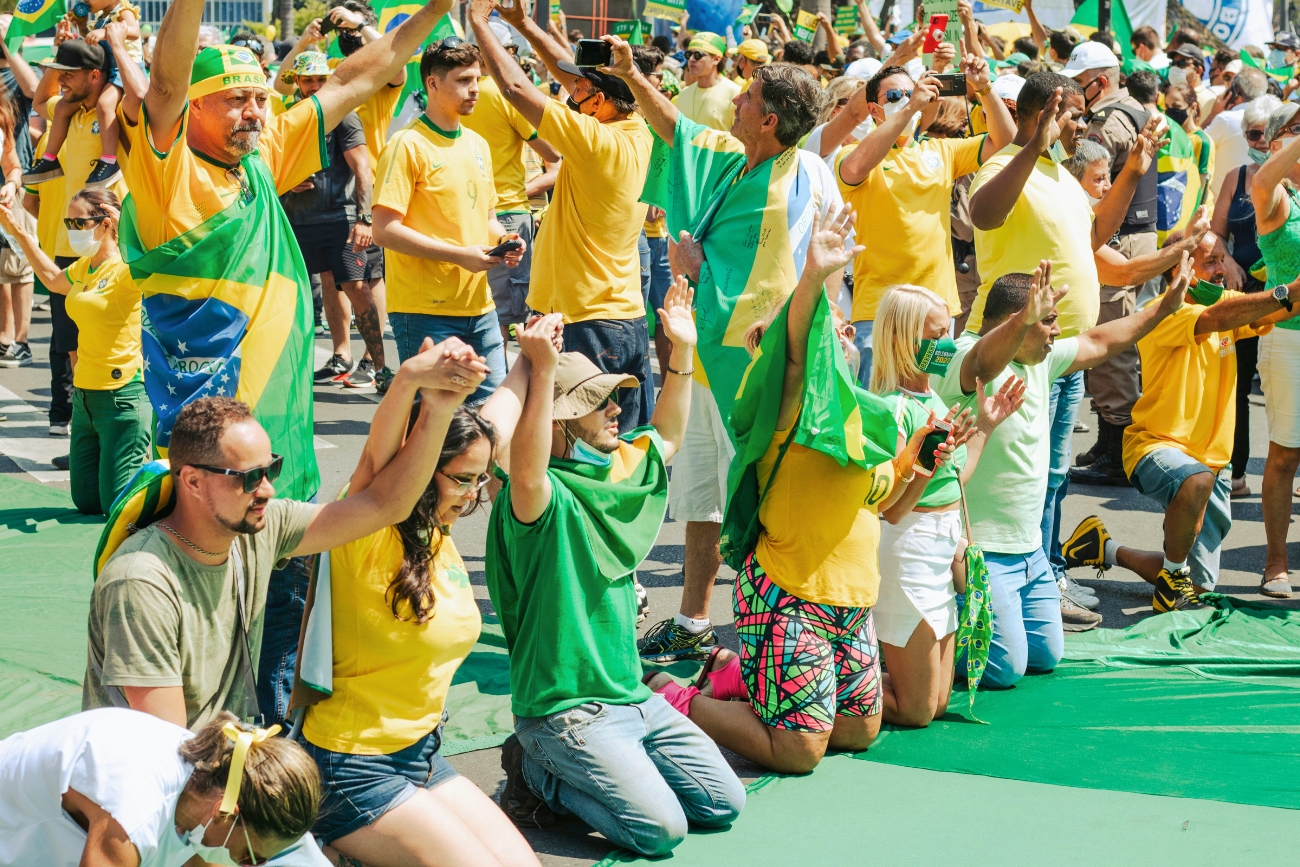Brazilian Culture and Portuguese vs. Spanish:
A Traveler’s Guide
Brazilian Culture and Portuguese vs. Spanish: A Traveler’s Guide TL;DR
The diverse people, beaches, carnival, food, futevôlei, Havaianas, music, Portuguese, samba, soccer, and overall sexy vibe make up Brazil. We’ll take a look at this unique South American country by diving into Brazilian culture and Portuguese vs. Spanish vocabulary.
Spanish Words on Top, Portuguese Words on Bottom
Portuguese Words with Green Background are Very Similar to Spanish | Portuguese Words in Red Background are Vastly Different
Portuguese vs. Spanish. There’s a static table for these 40 Portuguese and Spanish words below.
Brazilian Culture and Portuguese: My Brazilian Experience Was Unforgettable!
I’ve had the Brazilian Experience numerous times, last time being in 2014 and it never disappoints. I studied Brazilian Culture and Portuguese at the Universidade de Pernambuco in Recife. It was a very long time ago. It was a cultural program offered through the University of Illinois Urbana-Champaign. I lived with a Brazilian family for 3 months. While I was there, Brazil won the world cup against Italy, albeit on penalty shots (which I can’t stand). Why don’t they just do overtime? I guess it’s because the players are so worn out by then. First, learn a little bit about just how similar and how different vocabulary is between Portuguese and Spanish. If you’re fluent in Spanish, you’ll certainly be able to get around in Brazil or any Portuguese speaking country for that matter. Brazilian culture and Portuguese are what make this country special.
I’ve Been to These Places in Brazil
I was supposed to go to Fortaleza but never made it as I had to return to college. Unfortunately, I didn’t get to visit Brazil’s capital Brasilia, Minas Gerais or southern Brazil including Curitiba, Florianópolis and Foz do Iguaçu.
- Caruaru
- Guarujá
- João Pessoa
- Natal
- Olinda
- Recife
- Rio de Janeiro
- Salvador
- São Paulo
- Vilha Velha
- Vitória
Experience Brazilian Culture and Portuguese
Brazil, the land of samba, soccer, and bad ass beaches, dances to its own rhythm. It’s a place where crazy carnival every February contrasts the tranquility of the Amazon. Brazil is a diverse and resilient country. I’ll explore Brazilian culture and Portuguese, its diverse people, and the challenges Brazil faces, including safety concerns that every traveler should be aware of.
Understanding the Melting Pot of Cultures
Brazil is a melting pot where indigenous traditions blend seamlessly with African, Portuguese, and various immigrant influences. This cultural fusion is evident in every aspect of Brazilian life, from its music and dance to its culinary delights. When you walk down the lively streets of Rio de Janeiro or Salvador, you can see and feel the pulse of Brazilian diversity.
São Paulo, Largest Japanese Population Outside Japan
There’s also a strong Asian influence. São Paulo, the largest city in Brazil, has the largest Japanese population outside Japan. The neighborhood of Liberdade in São Paulo is well-known for its Japanese cultural influence, including restaurants, shops, and events celebrating Japanese heritage. Additionally, there are over 300 indigenous tribes, each with their unique customs and languages. Granted they aren’t found in the cities but they’re in Brazil. The Brazilian experience goes beyond the beaches of Rio de Janeiro.
Brazilian Food and Rodízio
I was married to a Brazilian. I’ve have had my share of Brazilian barbeques and have eaten at numerous Brazilian rodízio, “all you can eat” restaurants in Brazil, Mexico and the United States. I’m a big fan. The waiters just keep coming at you in waves armed with skewers of chicken, pork and of course picanha! They typically have a full salad bar with all kinds of vegetables including hearts of palm, soups, feijoada and cold cuts. The waiters also offer up chicken hearts but I’m not going there. Nope! If you’ve never been to a rodízio go to one, even if it’s in your home country. It might not be the true Brazilian experience but at least you’ll get a taste for Brazilian food!
Coxinha are savory teardrop-shaped pastries filled with seasoned shredded chicken, encased in dough, and deep-fried. They’re crunchy on the outside and fluffy on the inside. I ate a ton of these things. Coxinhas are very popular in Brazil.

This Brazilian salad is a mix of pasta, diced vegetables (such as bell peppers, tomatoes, and onions), and sometimes proteins like ham, chicken, or tuna. The salad is mixed with mayonnaise, creating a creamy texture. It’s similar to salpicão but with vegetables instead of fruit.

I absolutely love Feijoada but be warned. It’s like a sleeping aide, sort of how people doze off after a Thanksgiving meal. Feijoada is the national dish of Brazil. It’s a hearty black bean stew filled with various meats like pork and sausages. Feijoada originated when slaves would prepare this dish with the leftover meats given to them. Today, it’s a celebrated dish, enjoyed by everyone.

Small, fluffy cheese rolls made from tapioca flour, eggs, and cheese. Pão de queijo has a crispy exterior and a chewy, cheesy interior, making them a favorite snack and breakfast item.

Picanha is cooked in various ways, including grilling and roasting, the latter being the case with Brazilian rodízio restaurants. In rodízio restaurants, the meat is skewered and roasted over an open flame. For both methods the only ingredient used to season the meat is rock salt. In a rodízio, waiters with the cooked picanha pass by diners that have the green “Sim por favor” or yes card displayed and cut slices for the diner to grab using tongs. When the diner is full or wants to rest a bit, they simply flip the card red to “Não obrigado”.
The closest equivalent to picanha in English is the sirloin cap or rump cap. However, the way picanha is sliced and prepared in Brazil is distinct, making it a unique cut that might not be replicated precisely in other countries. Brazilian butchers cut picanha with a thick layer of fat on top, which adds to its delicious flavor and tenderness. Still, you can ask you butcher to cut the rump cap with the fat and try it out!

Brazilians are Affectionate and Warm
One thing you’ll notice for sure is the warmth and friendliness of Brazilians. They’re known for their hospitality and zest for life. Even Brazilians that aren’t well off financially seem to be happy. Brazilian’s “personal distance” between one another is a lot shorter than other countries. Girls will kiss on the cheek when meeting a man or woman. I remember my ex-brother in-law would hug me. He’d embrace his friends, especially when drunk, for a long time. I don’t mean a quick “bro-hug” like in the US that lasts for half a second. I’m talking 30 seconds at minimum, and no, he wasn’t gay. He loved women as much as I do. So, if you find yourself needing help, a friendly local will come to your aide even if you don’t speak Portuguese.
Brazilian Beach Culture
If you’re going to Brazil, then you have to know a bit about beach culture in Brazil. This way you’ll be ready to grasp everything as you see the Brazilian experience unfold before your eyes. Popular beaches can get very crowded but as mentioned above Brazilians have more tolerance for less “personal space” than other nationalities. Check out the tabs below so you’re on your game.
Havaianas, the iconic flip-flop brand of Brazil, represents more than just footwear; it embodies the carefree spirit of Brazilians. These simple flip-flops have become a global fashion phenomenon. Originating in 1962, Havaianas were initially inspired by traditional Japanese sandals, but the Brazilian touch transformed them into a symbol of casual elegance. What makes Havaianas special is their adaptability to various occasions. While they’re a beach essential, they seamlessly transition into everyday wear, mixing comfort with style unlike Crocs. From the sun-kissed Ipanema beach of Rio de Janeiro to international fashion runways, Havaianas have made their mark in the world.

Cangas or Pareos is the name for Sarongs or Cover-Ups in Portuguese, and you’ll see girls wearing them everywhere around the beach or at pools. These cover-ups are commonly worn over bikinis in Brazil. Cangas are versatile and can be worn as a full cover-up or tied at the waist allowing women to “show off” their slim tummy and bikini top. They’re lightweight, easy to pack, and provide women a stylish layer of clothing while enjoying the beach or pool. They can also act as a “beach towel” to sit at the beach. Cangas come in a wide variety of colors and patterns and are fashionable in Brazil.

Literally translating to “dental floss” Fio Dental refers to the minimalist bikini style popular on Brazilian beaches, reflecting the Brazilians’ body positivity. They’re not just worn by bikini model types. Even women that aren’t in the greatest shape wear them. Brazilians are very open and don’t have “vergonha” or shame to show off their body. It’s not just women. Lots of men wear Speedo type bathing suits as opposed to the typical board shorts worn in the United States and no it doesn’t mean they’re gay. I mean they could be, but who cares? I don’t know why Americans think that. Brazilian women drool over a stud in a Speedo.
I was in Salvador at some bar and people were dancing. I specifically remember that this girl’s breast slipped out of her shirt while dancing. This is something that would “freak people out” from other countries. I remember myself being like, “Oh my god, her tit just fell out!” Of course, nobody else cared or noticed and she just ever so subtly slipped her breast back into place as if it never happened. Generally speaking, “tits” aren’t a big deal in Brazil. Now Brazilian butts are a different story!

Futevôlei is a beach sport that combines elements soccer and volleyball. In Futevôlei, players use their feet, head, thighs, and chest to control and hit the ball over the net, similar to volleyball, but players can’t use their hands. Futevôlei originated in Brazil in the 1960s. It has gained international popularity and is a common scene throughout Brazil’s beaches. Futevôlei requires agility, balance, and precise ball control. It’s a testament to Brazil’s love for soccer, volleyball and beach culture.
Regular volleyball is also played. If you’ve ever watched the summer Olympics, you’ll have noticed that Brazil is always a contender for a medal in both 6 on 6 hardcourt indoor volleyball and 2 on 2 men’s and women’s beach volleyball. Brazil has won a total of 19 Olympic medals in volleyball, combining both indoor and beach volleyball for both men and women as of 2023.

You’d have to be living under a rock to not know about Brazil’s obsession with Soccer, or “futebol” in Portuguese. You can see kids and adults playing soccer anywhere whether on the beach, a street or a proper pitch. Brazil’s national team has won numerous international accolades. In the Olympics, Brazil’s soccer dominance is evident, having won a total of 7 gold medals, 3 silver medals, and 3 bronze medals in the men’s category. The Brazilian women’s national team has secured 2 silver medals and 1 bronze medal.
I remember sitting in a restaurant on the beach in Rio de Janeiro watching this older street performer pull off some amazing tricks on the sidewalk with a soccer ball. I’ve seen juggling acts before at stop lights in numerous places in Latin America, but this old guy’s skills were legit or “lit” as today’s youth would say.

Safety Concerns in Brazil While on Vacay
Brazil does have high crime in many cities. It’s important to be aware of your surroundings and take basic safety precautions that I’m sure you’ve read or heard about a thousand times. Check out the tabs below concerning safety tips in Brazil.
I know people want to have fun and for those that drink, I get it. Although I quit drinking, I know what it’s like to be young and want to party. I want people to have fun and “live”. Don’t go to bad areas and don’t get too wasted in some sketchy part of the city. Do your own research in advance of where you’ll be going and let your friends and/or family know where you’ll be at all times. On the other hand, don’t let strangers know your whereabouts.
Also, if you drink make sure you have your drink with you at all times. Don’t go to the bathroom and leave your drink at the bar and come back and drink it. Scopolamine is a drug used in Medellín, and other parts of Colombia to knock people out and rob them of their belongings. I’m guessing Colombia isn’t the only country where this happens.
Unlike some other Latin American countries, you can actually blend in at least a little bit in Brazil. Major cities have a mix of skin colors. Generally speaking, however, southern Brazil has more white people than northern Brazil. Not everyone is black, or brown, or white. It’s a great mix. You can’t quite blend in once you open your mouth unless you speak fluent Portuguese.
Be careful with your cell phone. Of course, you want to have a good time and get some Instagram worthy pics or videos but just be aware of your surroundings. Be extra cautious at night. Use your gut instinct. We have very powerful instincts. We just need to listen to them.
I don’t recommend bringing any jewelry whatsoever to Brazil. Even if it’s fake and “worth nothing”, a thief doesn’t know that and may still attack. Leave the bling at home.
Stay away from wearing Crocs or Tevas. Nobody in Brazil would dare wear Crocs or double strapped Tevas over Havaianas. You’ll immediately stick out. Besides, they’re ugly. You could by Havaianas before you go but you’ll have more choices at a lower price in Brazil with designs that are truly Brazilian. Buy them in Brazil.
If you want to do a favela tour in Rio de Janeiro or any tour for that matter, do it during the day with a reputable tour company. Check on Trip Advisor.
Check Out Capoeira in Brazil
Capoeira is a must see when visiting Brazil. It’s a captivating blend of, acrobatics, dance, martial arts and music. Performed by African slaves in the 16th century, capoeira served as a clever disguise for self-defense, resembling a dance rather than combat. Performers are known as “capoeiristas”. Capoeira is truly an art form that emphasizes creativity and fluidity. Capoeiristas don’t actually strike each other; instead, they show off their skills, showcasing the art’s core philosophy of non-contact camaraderie. This unique combination of athleticism, music, and mutual respect among all capoeiristas has made it a cherished part of Brazil’s cultural heritage and is a must see for the true Brazilian experience.
Capoeira Goes International
Capoeira’s popularity has spread to other parts of the world. In popular culture, Dustin Hoffman was seen “practicing capoeira” in the movie Meet the Fockers, and NBC covered capoeira during the summer Olympics in 2016 in Rio de Janeiro. There are several videos on YouTube showcasing how talented capoeristas are. The athleticism on display is remarkable.
Você pode aprender português
If you know some Spanish, then you can at least pick up at least some Portuguese. While the accent and pronunciation are vastly different there are many words that are the same or very close to the same. Learning Brazilian culture and Portuguese will make for a better Brazilian experience! Você entendeu? Vá aprenda agora!
Portuguese vs. Spanish Similar Vocabulary
Spanish and Portuguese, both stemming from Latin, have a huge overlap in their vocabulary. This trait allows speakers of one language to comprehend a considerable portion of the other. Below, you’ll find a list of 40 words in Spanish and their corresponding counterparts in Portuguese, demonstrating the linguistic similarities between the two.
| Spanish | Portuguese |
|---|---|
| Agua | Água |
| Amigo | Amigo |
| Animal | Animal |
| Artículo | Artigo |
| Banco | Banco |
| Barco | Barco |
| Carta | Carta |
| Ciudad | Cidade |
| Color | Cor |
| Comida | Comida |
| Día | Dia |
| Escuela | Escola |
| Familia | Família |
| Flor | Flor |
| Fruta | Fruta |
| Hora | Hora |
| Hotel | Hotel |
| Idea | Ideia |
| Información | Informação |
| Lugar | Lugar |
| Mañana | Manhã |
| Mar | Mar |
| Mercado | Mercado |
| Mes | Mês |
| Montaña | Montanha |
| Noche | Noite |
| Nombre | Nome |
| Número | Número |
| País | País |
| Palabra | Palavra |
| Persona | Pessoa |
| Problema | Problema |
| Restaurante | Restaurante |
| Río | Rio |
| Semana | Semana |
| Tiempo | Tempo |
| Tren | Trem |
| Universidad | Universidade |
| Vida | Vida |
| Viaje | Viagem |
| Zapato | Sapato |
Portuguese vs. Spanish Different Vocabulary
Hold Your Horses, Not All Vocabulary Between Spanish and Portuguese is Similar
On the other hand, there are numerous words in Portuguese that are “nada que ver” with Spanish. Below, you’ll find a list of 40 words in Spanish and their corresponding counterparts in Portuguese, that are vastly different. It’s OK, you got this. Learning Brazilian Culture and Portuguese in addition to Spanish just ups your game that much more.
| Spanish | Portuguese |
|---|---|
| Agujero (hueco) | Buraco |
| Bosque | Floresta |
| Caliente, Rica (una mujer guapa, sexy) | Gostosa |
| Celos (celoso) | Ciúmes |
| Chistoso | Engraçado |
| Colibrí | Beija-flor |
| Cucaracha | Barata |
| Cuchara | Colher |
| Cuchillo | Faca |
| Culo/nalgas | Cu/Bunda |
| Desayuno | Café da manhã |
| Despertar | Acordar |
| Embarazada | Grávida |
| Espalda | Costas |
| Extrañar | Saudades (ter) |
| Galleta | Biscoito |
| Helado | Sorvete |
| Jaguar | Onça |
| Llamar (por teléfono) | Ligar (por telefone) |
| Llanta | Pneu |
| Mariposa | Borboleta |
| Mono | Macaco |
| Palomitas (de maíz) | Pipoca |
| Pantalón | Calça |
| Papas | Batatas |
| Papaya | Mamão |
| Película | Filme |
| Pescado | Peixe |
| Piña | Abacaxi |
| Pollo | Frango |
| Relámpago (rayo si es similar) | Raio |
| Rodilla | Joelho |
| Silla | Cadeira |
| Solo | Sozinho |
| Sombrero | Chapéu |
| Tenedor | Garfo |
| Tu/Usted | Você |
| Vacaciones | Férias |
| Ventana | Janela |
| Ver (televisión) | Assistir (televisão) |